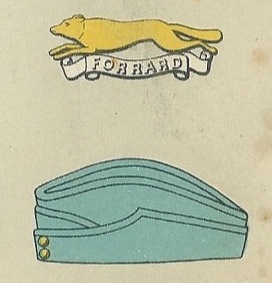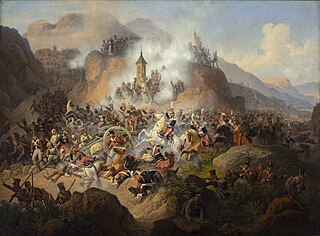 W
WThe 11th Hussar Regiment was a hussar regiment in the French Army.
 W
WArmy of the Duchy of Warsaw refers to the military forces of the Duchy of Warsaw. The Army was significantly based on the Polish Legions; it numbered about 30,000 and was expanded during wartime to almost 100,000. It was composed of infantry with a strong cavalry force supported by artillery. The Napoleonic customs and traditions resulted in some social tensions, but are generally credited with helpful modernization and useful reforms.
 W
WThe 1st East Yorkshire Artillery Volunteers was a part-time unit of Britain's Royal Artillery based in the East Riding of Yorkshire, which also contained sub-units from the North and West Ridings. Created during an invasion scare in 1859–1860, it survived to supply units to the later Territorial Force of the 20th century.
 W
WThe East Riding of Yorkshire Yeomanry was a unit of the British Army formed in 1902. Units of Yeomanry Cavalry were raised in the East Riding of Yorkshire in the 18th and early 19th centuries at times of national emergency: the Jacobite Rising of 1745, the French Revolutionary Wars and the Napoleonic Wars. These were stood down once each emergency was over. The East Riding of Yorkshire Yeomanry, was established in 1902, and this saw action during the First World War both in the mounted role and as machine gunners.
 W
WThe East Riding of Yorkshire Yeomanry was a unit of the British Army formed in 1902. Units of Yeomanry Cavalry were raised in the East Riding of Yorkshire in the 18th and early 19th centuries at times of national emergency: the Jacobite Rising of 1745, the French Revolutionary Wars and the Napoleonic Wars. These were stood down once each emergency was over. The East Riding of Yorkshire Yeomanry, was established in 1902, and this saw action during the First World War both in the mounted role and as machine gunners.
 W
WThe Guards of Honour were a light cavalry unit raised by Napoleon I's First French Empire in 1813. Napoleon was short of cavalry following his failed invasion of Russia and the Guards were raised to remedy this. Drawn from members of the nobility most were already experienced riders, which meant that lengthy horsemanship training was not required. They were also expected to provide their own uniforms, horses and equipment which lessened the burden on the French treasury. Because many of the men were of foreign or royalist backgrounds, the unit also served as a supply of potential hostages in case the men's families contemplated opposition to Napoleon.
 W
WThe Legion of the Vistula was a unit of Poles in the service of Napoleonic France, one of the larger Polish legions of the Napoleonic period.
 W
WThe Neapolitan Regiment of Honour Guards was a royal bodyguard unit of the Royal Neapolitan Guard, and was in turn part of the wider Neapolitan Army. The regiment was formed following the succession of Joachim Murat, and would continue to act as the official bodyguard under different designations until its eventual disbandment in 1815 following the disastrous Neapolitan War.
 W
WThe 1st Polish Light Cavalry Regiment of the Imperial Guard was a formation of Polish light cavalry that served Emperor Napoleon during the Napoleonic Wars.
 W
WThe Portuguese Legion was the 9,000 men strong Portuguese military force integrated in the Napoleon's Imperial Armies, mobilized after the occupation of Portugal by the army of General Junot, in 1807.
 W
WThe City of Bristol Rifles was a Volunteer unit of the British Army from 1859 to 1955. It became a battalion of the Gloucestershire Regiment and fought in France, Flanders and Italy in World War I. As a searchlight unit in World War II it defended the West Country against air raids before moving to the East Coast late in the war. It continued in the postwar Territorial Army (TA) as a heavy anti-aircraft artillery regiment until amalgamated with other Gloucestershire units in 1955.
 W
WThe history of the Danish navy began with the founding of a joint Dano-Norwegian navy on 10 August 1510, when King John appointed his vassal Henrik Krummedige to become "chief captain and head of all our captains, men and servants whom we now have appointed and ordered to be at sea".